Magic Mushroom Chocolates: Unveiling Unique Flavors and Altered Sensory Experiences
Magic Mushroom Chocolates revolutionize the culinary landscape by fusing elevated sensory experience…….
Welcome to an immersive journey into the fascinating world of Magic Mushroom Chocolates and Time Perception, a unique and rapidly evolving niche within the culinary and wellness industries. This article aims to unravel the complexities of this topic, offering insights that range from its historical roots to its global impact and future potential. By delving into various aspects, we will uncover how magic mushroom chocolates have not only satisfied taste buds but also influenced perceptions of time and well-being. Through scientific exploration, cultural trends, and economic analyses, we will demystify this phenomenon and provide a comprehensive understanding for both enthusiasts and curious observers alike.
Definition: Magic mushroom chocolates refer to gourmet confections infused with psilocybin mushrooms (magic mushrooms), a naturally occurring psychedelic compound known for its mind-altering effects. These chocolates combine the art of chocolate making with the unique properties of psychedelic mushrooms, creating a sensory experience that goes beyond traditional sweet treats.
Historical Context: The concept of incorporating magic mushrooms into edible forms is not new. Indigenous cultures worldwide have historically used psilocybin mushrooms for their medicinal and spiritual properties. However, it was in the late 20th century that this practice began to intersect with modern culinary arts and wellness movements. The 1960s counterculture era saw a surge in interest in psychedelic experiences, leading to increased research and exploration of magic mushrooms. Fast forward to the present day, and we witness a renaissance of sorts, as magic mushroom chocolates have emerged as a sophisticated way to engage with these ancient compounds.
Significance: The fusion of magic mushrooms and chocolate represents more than just a culinary trend. It taps into a growing desire for experiential products that offer both sensory delight and potential therapeutic benefits. By infusing psilocybin, these chocolates provide users with a unique experience that can alter perception, enhance creativity, and induce profound insights. This intersection of food, consciousness, and well-being has captured the imagination of many, leading to a surge in popularity and scientific interest.
The global impact of magic mushroom chocolates is evident across diverse regions, each embracing this unique culinary offering with its own cultural flair. North America, Europe, and Australia have been at the forefront of this movement, with a thriving community of craft chocolate makers and psychedelic wellness centers. However, even in Asia and South America, where traditional medicinal mushroom practices are deeply rooted, modern interpretations of magic mushroom chocolates are gaining popularity.
Market Size and Growth: The global psychedelic food market, including magic mushroom chocolates, is projected to reach USD 24.3 billion by 2027, growing at a CAGR of 16.5% from 2020 to 2027 (Source: Grand View Research). This rapid growth indicates a significant shift in consumer attitudes towards alternative wellness practices and experiential foods.
Target Audience: The primary target market for magic mushroom chocolates includes millenials and Gen Z consumers who are health-conscious, open-minded, and willing to explore novel experiences. These individuals often seek holistic approaches to well-being and are attracted to the idea of expanding consciousness through edible psychedelics.
Investment Patterns: Venture capital firms and angel investors have shown a growing interest in psychedelic food startups, recognizing the potential for disruptive innovation and significant returns. Funding rounds for magic mushroom chocolate companies have increased in recent years, attracting attention from both traditional investors and cannabis-focused venture capitalists.
Pricing Strategy: Premium pricing is common in the craft chocolate segment, with luxury brands offering small batches at a higher price point. However, as the market matures, we may see a broader range of pricing strategies, including affordable options to cater to a wider audience.
Psilocybin 101: Psilocybin is a naturally occurring psychedelic compound found in over 200 species of mushrooms, with psilocybin mushrooms (e.g., Psilocybe cubensis) being the most commonly used for recreational and therapeutic purposes. When ingested, psilocybin breaks down into psilocin, which interacts with serotonin receptors in the brain, leading to altered perceptions and heightened sensory experiences.
Therapeutic Applications: Research has shown that psilocybin-assisted therapy can be effective in treating depression, anxiety, and post-traumatic stress disorder (PTSD). The experience of taking magic mushrooms can lead to profound insights, emotional release, and a sense of connectedness with the environment. These therapeutic effects have sparked interest in integrating psychedelics into mainstream mental health treatments.
Time Perception and Creativity: One of the most intriguing aspects of psilocybin is its influence on time perception. Users often report experiencing time distortion, where minutes feel like hours or vice versa. This altered sense of time can foster creative thinking and inspire novel ideas. Many artists, musicians, and writers have credited magic mushroom experiences with enhancing their creativity and contributing to groundbreaking works.
Sourcing Ingredients: The quality of magic mushroom chocolates begins with sourcing high-potency, organic psilocybin mushrooms. Growers use sustainable farming practices to cultivate these mushrooms, ensuring a consistent supply for chocolatiers. Additionally, premium cocoa beans, nuts, and other ingredients are carefully selected to create complex flavor profiles.
Extraction Methods: There are various methods of extracting psilocybin from mushrooms, each offering unique advantages and challenges. Some chocolatiers infuse dried mushrooms directly into chocolate ganache, while others use extracts or concentrates to maintain consistency in potency and flavor.
Regulation and Testing: As the industry matures, regulatory bodies are implementing standards for psychedelic food production. Strict testing procedures ensure that products contain the advertised amounts of psilocybin and meet safety guidelines. Third-party labs play a crucial role in verifying the quality and potency of magic mushroom chocolates.
Packaging and Discretion: Packaging design is essential for both attracting customers and maintaining discretion. Many brands opt for sleek, minimalist designs or utilize creative imagery to convey the unique experience without explicit references to psychedelics.
The consumption of magic mushroom chocolates offers a multi-sensory experience that goes beyond taste. Here’s what users can expect:
Mental Health Support: Magic mushroom chocolates are not just about recreational use; they have potential therapeutic applications. Research suggests that psilocybin-assisted therapy can be effective in treating various mental health disorders. Clinical trials have shown promising results for major depressive disorder, anxiety, and PTSD, with many participants reporting long-lasting positive effects.
Addiction Recovery: The calming and introspective effects of magic mushrooms have been explored as a tool in addiction recovery programs. Some rehabilitation centers incorporate psilocybin-assisted therapy to help individuals process trauma and develop coping strategies for substance abuse.
Pain Management: Preliminary studies indicate that psilocybin may have analgesic properties, offering potential relief for chronic pain sufferers. The experience of being immersed in nature during a magic mushroom session has also been linked to reduced pain perception.
The legal status of magic mushroom chocolates varies worldwide, with some countries and regions having strict regulations or even prohibiting the use and sale of psychedelics. Here are some key considerations:
Regulation and Legislation: As public awareness grows, governments are grappling with how to regulate psychedelic substances. Some countries have decriminalized psilocybin for personal use, while others maintain strict controls. Understanding local laws is crucial for both producers and consumers.
Ethical Use: The ethical implications of using psychedelics are a subject of ongoing debate. Advocates argue for responsible use and therapeutic integration, emphasizing the potential benefits for mental health and well-being. Critics raise concerns about misuse, addiction, and the lack of scientific understanding of these substances.
Informed Consent and Education: Ensuring that consumers fully understand the effects and risks associated with magic mushroom chocolates is essential. Informed consent should be a cornerstone of any psychedelic therapy or experience.
The world of magic mushroom chocolates is rapidly evolving, and several trends suggest its future direction:
Mainstream Adoption: As research continues to highlight the therapeutic benefits of psilocybin, mainstream acceptance may grow. Magic mushroom chocolates could become more commonplace in health food stores, specialty cafes, and even wellness retreats.
Integration with Wellness Practices: The intersection of psychedelic therapy and wellness is gaining traction. We may see magic mushroom chocolates incorporated into meditation retreats, yoga studios, or as part of holistic healing programs.
Personalized Experiences: Customization and personalization will likely play a significant role in the industry’s growth. Customers may have the option to choose specific mushroom strains, flavor profiles, and dosage levels tailored to their preferences and desired outcomes.
Scientific Research Partnerships: Collaborations between chocolatiers, scientists, and mental health professionals could lead to innovative products and therapeutic approaches. Such partnerships can drive the development of standardized doses, high-quality ingredients, and evidence-based practices.
Global Expansion: With evolving legal landscapes, the global market for magic mushroom chocolates is expected to expand. As countries lift restrictions or implement regulated frameworks, international brands may enter new markets, offering a diverse range of products to global consumers.
In conclusion, magic mushroom chocolates represent a fascinating intersection of food science, psychedelic research, and consumer trends. As the industry continues to evolve, it will be interesting to witness how these unique products shape the future of both recreational and therapeutic experiences.
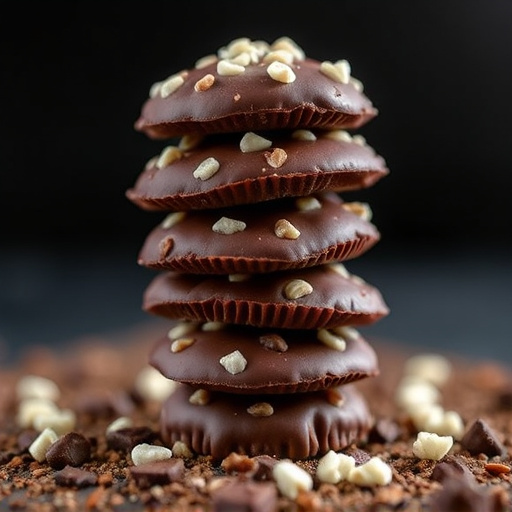
Magic Mushroom Chocolates revolutionize the culinary landscape by fusing elevated sensory experience…….
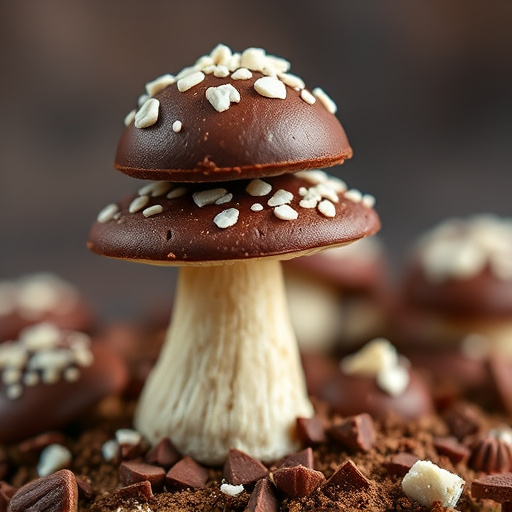
Magic Mushroom Chocolates blend culinary delight with psychedelic experiences, offering altered time…….
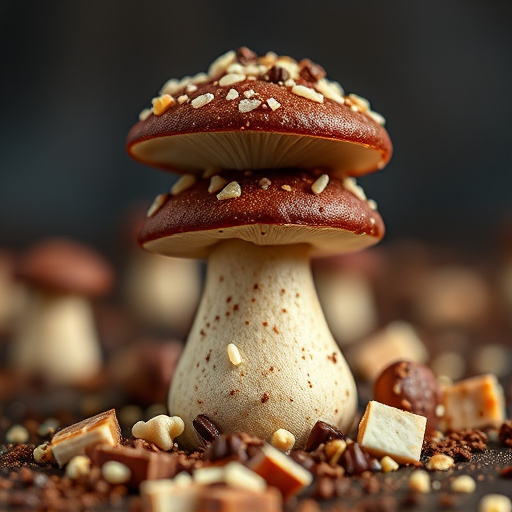
Magic Mushroom Chocolates blend premium ingredients with psilocybin and psilocin compounds from spec…….
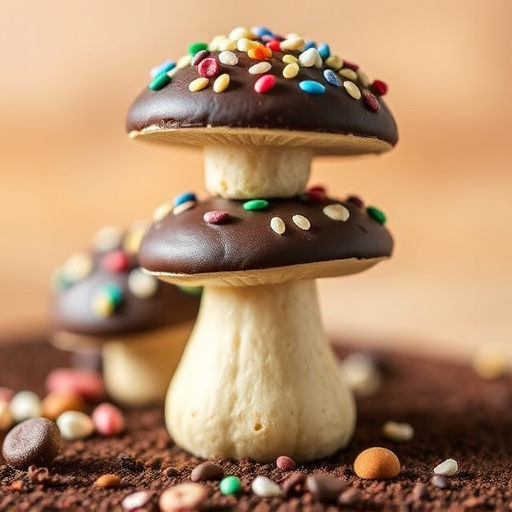
Magic mushroom chocolates offer a unique blend of culinary delight and psychedelic experiences, alte…….
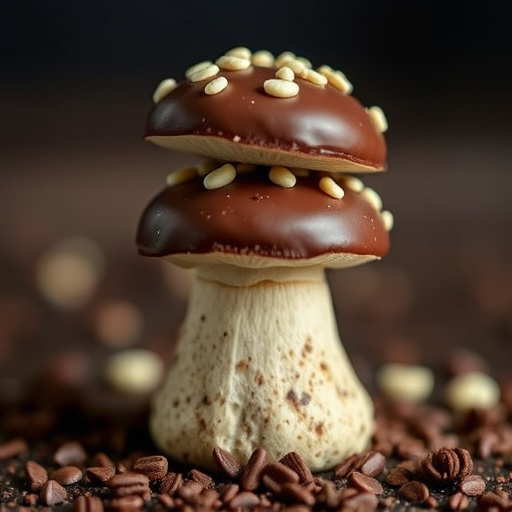
The Magic Mushroom Chocolates subscription service combines gourmet confectionery with the mystical…….
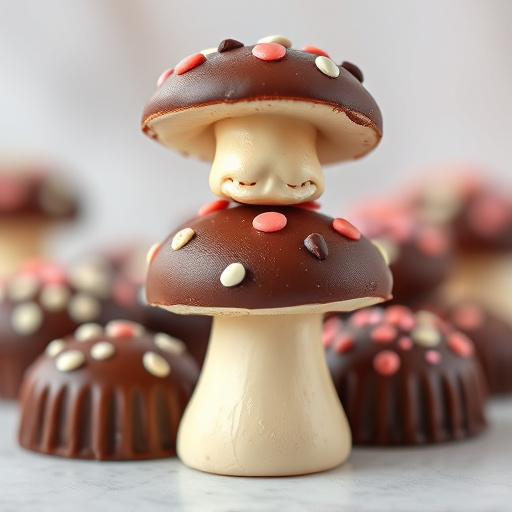
Magic mushroom chocolates, infused with lab-tested psilocybin extracts, offer a unique culinary expe…….
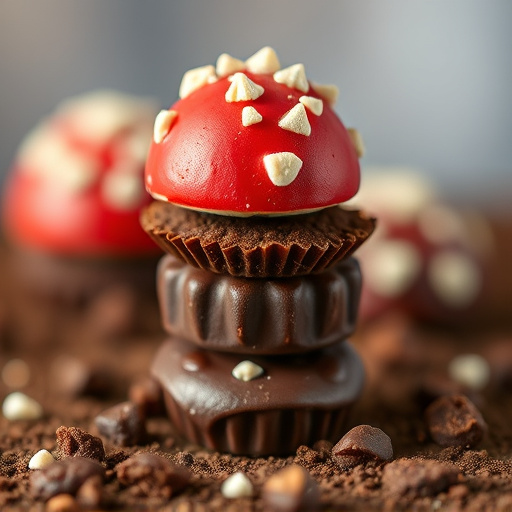
Magic Mushroom Chocolates are transforming the indulgent treats scene by blending psychedelic mushro…….
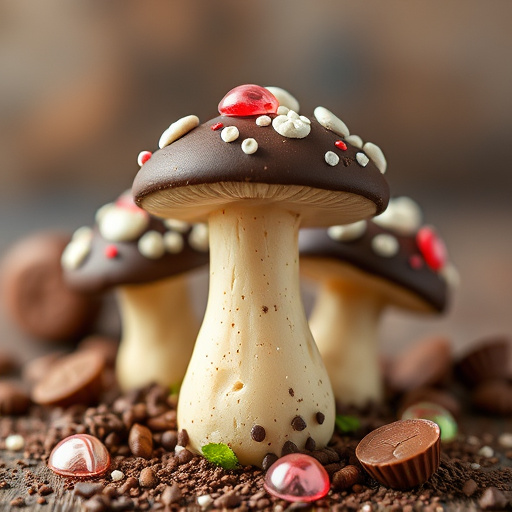
Magic mushroom chocolates offer a novel, delicious approach to mental health treatment, incorporatin…….
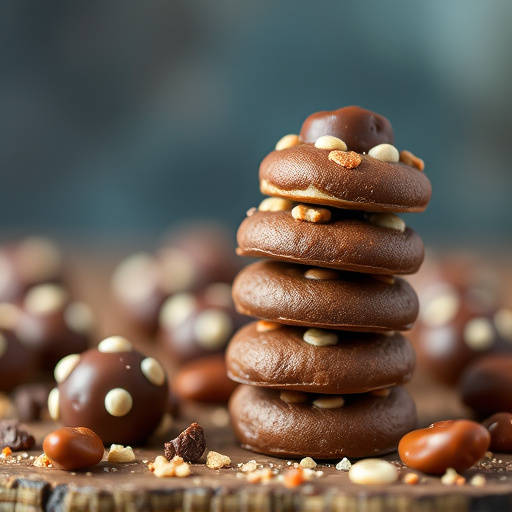
Unveiling Organic Magic Mushroom Chocolates offers a groundbreaking sensory experience, infusing pre…….